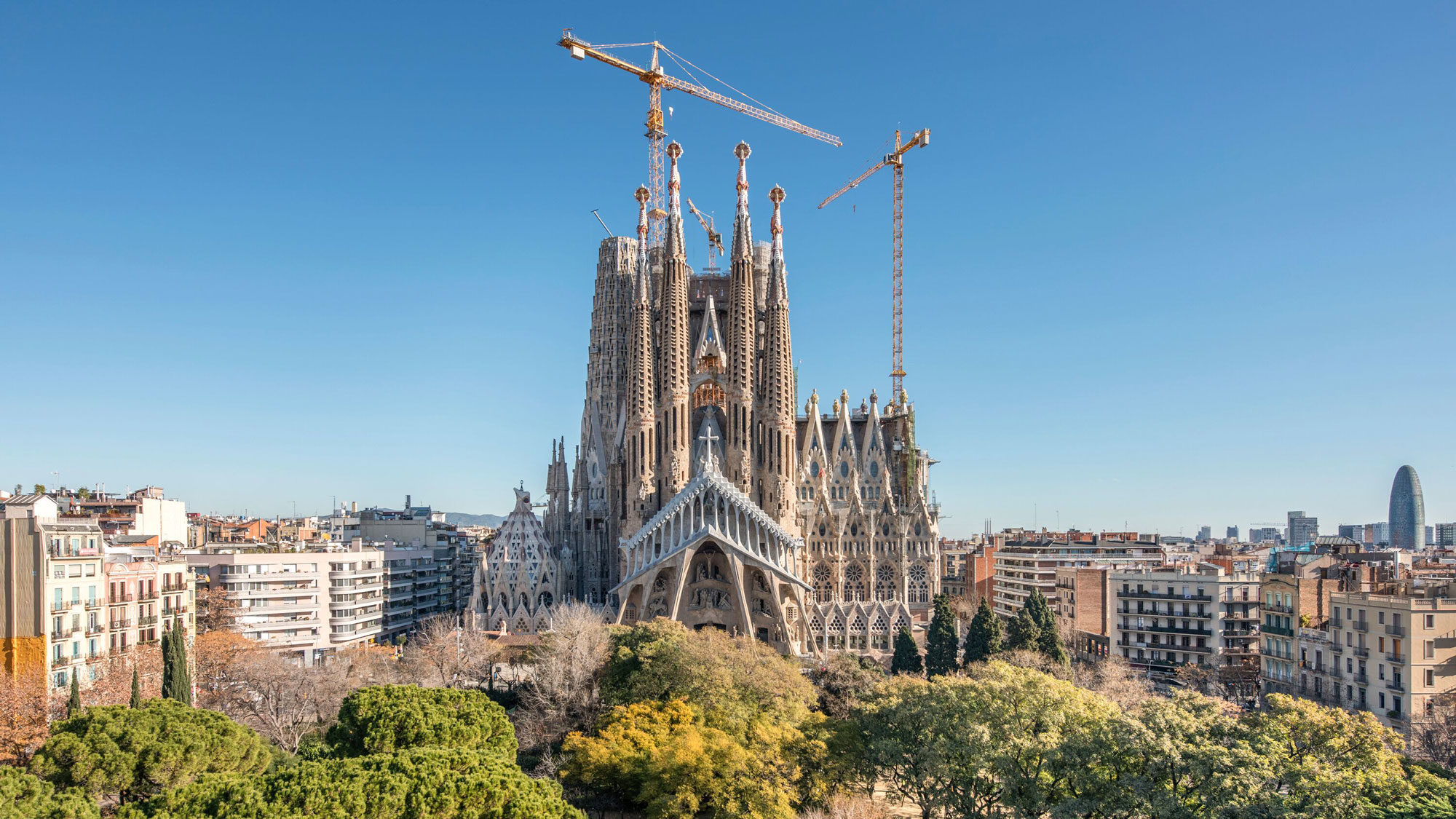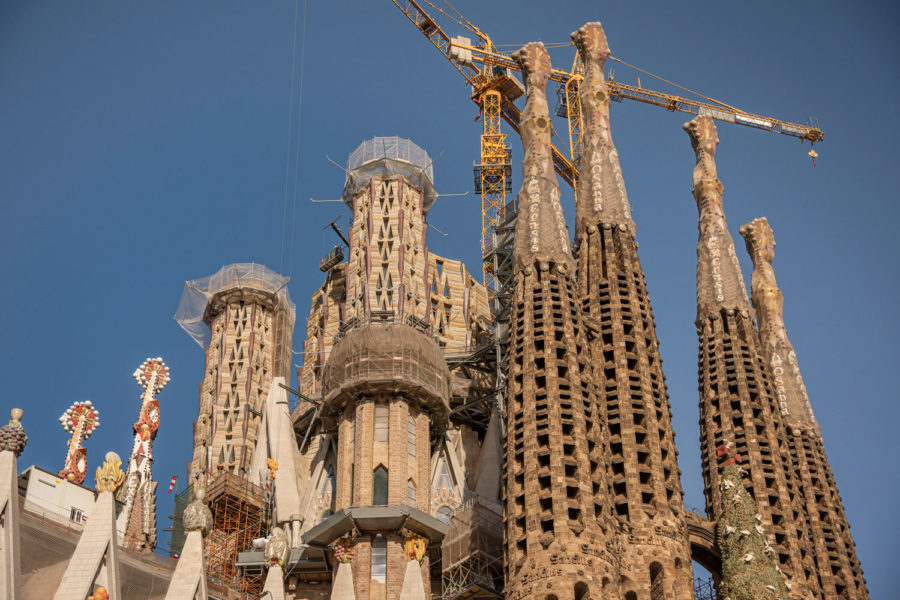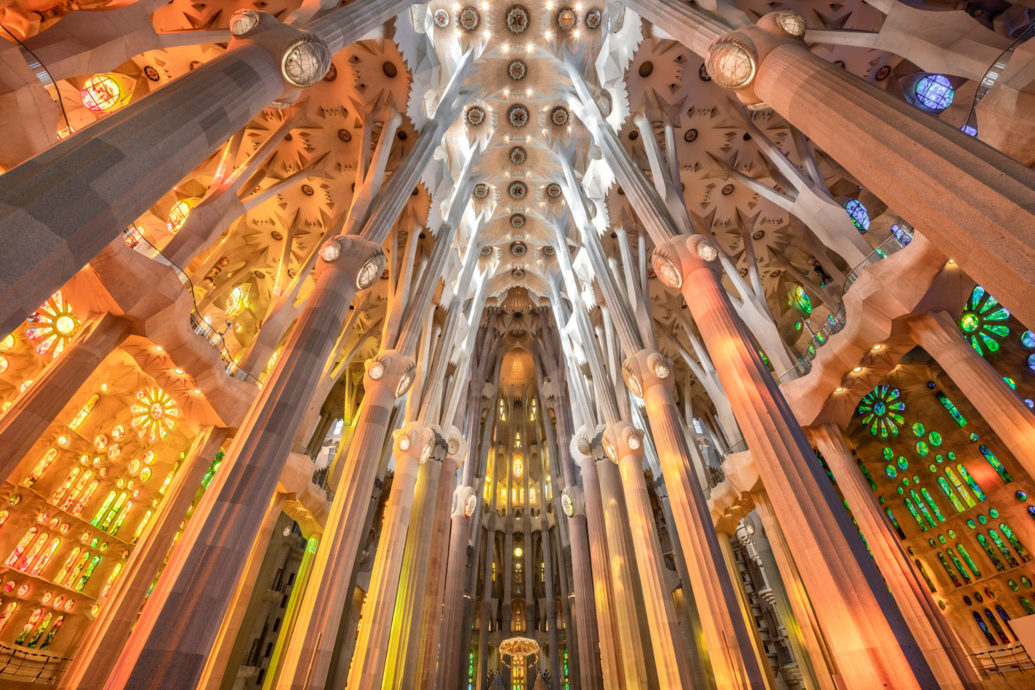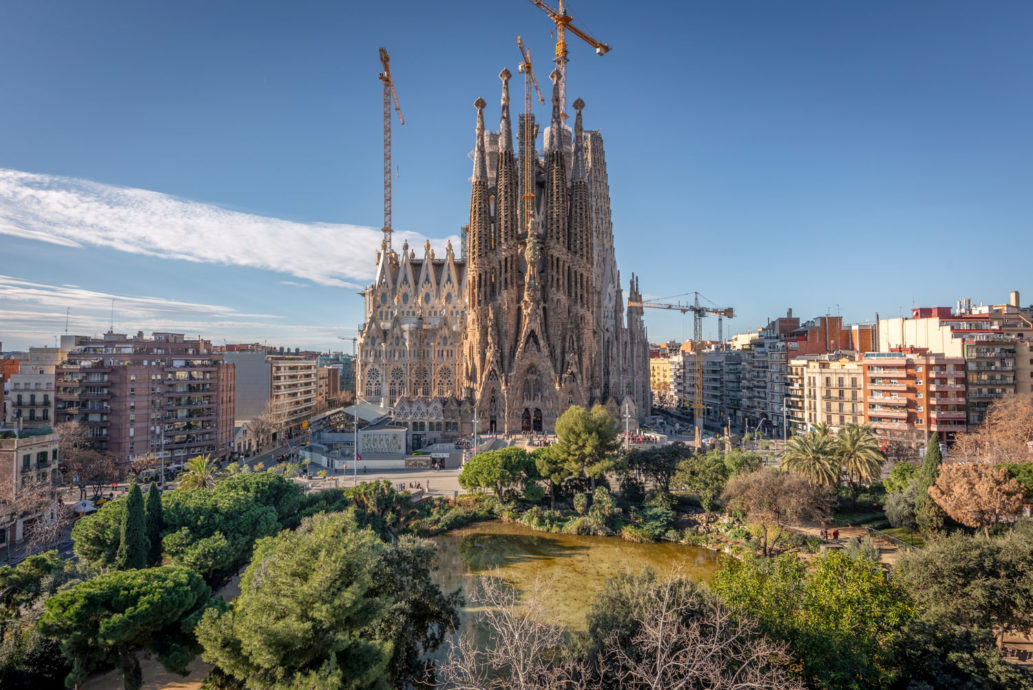For over 130 years, Antoni Gaudí’s Temple Expiatori de la Sagrada Família—a hulking, Modernisme Roman Catholic basilica in Barcelona—has been under construction, a life-sized sneak-preview of what it could one day be. In a city full of Gaudí works—the snaking Park Güell, the iridescent Casa Batlló, the near-brutalist Casa Milà—its allure stands tallest, stemming as much from its form as it does from its permanently in-progress state. Surrounded by workers and cranes, it is truly a living, breathing piece of architecture.
It won’t be in-progress for much longer, though (theoretically). Over a century after the laying of its first stone, the Sagrada Família finally has an official green light for completion after the foundation managing its construction paid the city $41 million for all previous work which, fascinatingly, was done without a permit. After generations of starts, stops, and attacks by arsonists, it’s slated to finish in 2026, 100 years after the death of Gaudí, who committed his last 44 years to it.
The permit’s receipt marks, in a way, the beginning of the end. The open-ended lifespan of the process created a seemingly infinite temporal space within which the myth of the Sagrada Família came to overshadow its reality. For generations of Barcelonans and people around the world, it has been alive link between past and future—alive and unfinished then, as now, as tomorrow. I didn’t know my Spanish great-grandparents, but I do know that they, as I, saw the Sagrada Família being built. As the world changed around it, the fact of its non-completion, of its ongoing process, held true and constant; the Sagrada Família has remained still, yet in motion, caught in suspended time.






